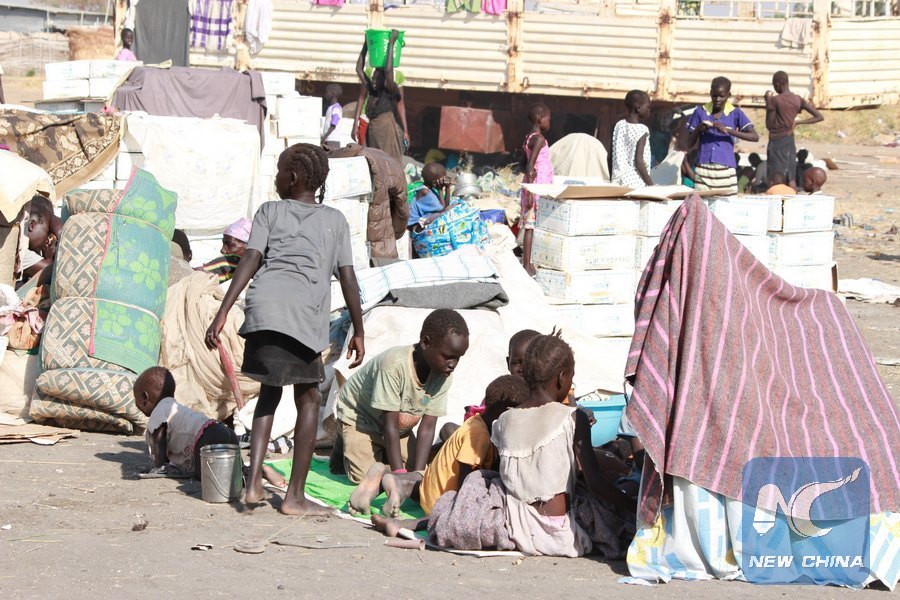
Internally Displaced Persons (IDPs) wait to be airlifted to the South Sudanese Northern State of Eastern Nile, in Juba, capital of South Sudan, Jan. 7, 2017. Hundreds of IDPs have been stranded in Juba since December 2016 following the start of a voluntary repatriation program initiated by the South Sudan's government, to resettle people displaced by three years of civil war. (Xinhua/Gale Julius)
JUBA, Feb. 4 (Xinhua) -- The UN humanitarian agency has warned that the risk of famine in South Sudan is real for thousands of people in conflict-affected communities and food deficit areas.
In its latest report which cited food security and livelihoods experts, the UN Office for Coordination of Humanitarian Affairs (OCHA) said South Sudanese are likely to face extreme levels of food insecurity in an extended lean season from February to July 2017.
"Despite the harvest season, levels of acute malnutrition remained high, with the prevalence of Global Acute Malnutrition (GAM), recorded by SMART surveys conducted between September and November 2016, remaining serious or worse (10 percent or higher)," OCHA said in the report released on Friday evening.
The report says the continued devaluation of the South Sudanese Pound (SSP), insecurity along key road routes, below-average harvests, and the consequent reduction of food availability in local markets have driven prices to record levels.
In November 2016, retail sorghum prices in Aweil, Wau, and Juba averaged 7.7 U.S. dollars /kg, four times higher than the previous year and 10 to 15 times higher than in November 2013, the month before the initial outbreak of conflict.
"Urban populations are struggling to cope, with an estimated 400,000 people in Juba, Wau and Aweil now severely food insecure," the UN said.
According to OCHA, nutrition is expected to deteriorate to "critical" levels during the lean season as food stocks are depleted and prices are likely to peak.
The report says as many households were unable to cultivate, people continue to rely primarily on fish and wild foods to survive.
At the height of the lean season in July 2016, some 4.8 million people were estimated to be severely food insecure.
In the last quarter of 2016 following the harvest, partners estimated that some 3.7 million people were food insecure -representing an increase of one million people compared to the same period in 2015- and food security experts warned that the benefits of the harvest would be short-lived.
"With conflict driving new displacement, and continued economic decline driving market prices up, these figures are expected to increase in 2017," OCHA warned.

